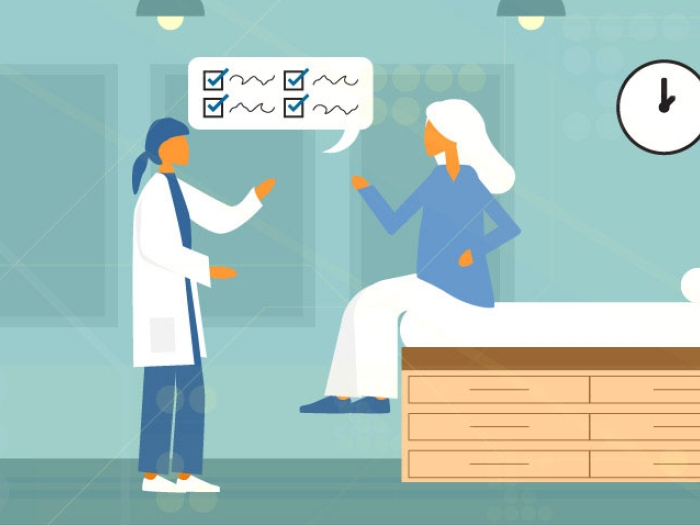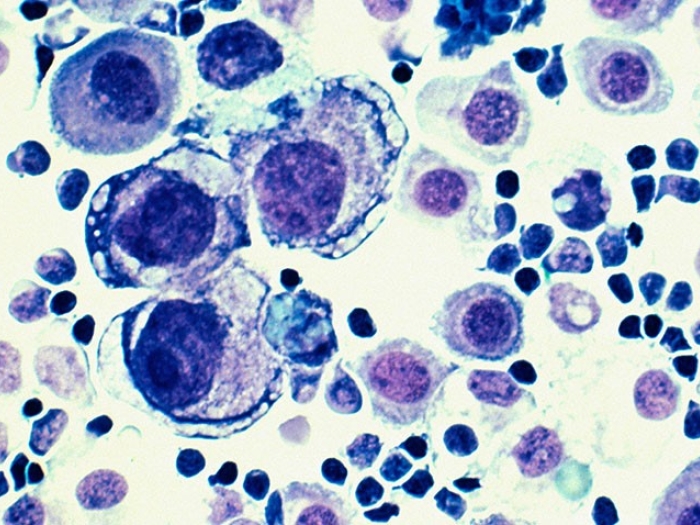Five years of endocrine therapy or 10? As breast cancer patients weigh the benefits of long-term treatment, a new study might help.
5:00 PM
Author |

Life after breast cancer is, in many ways, about balance.
Depending on the type of cancer, therapy can cause side effects such as joint pain, trouble sleeping, sexual dysfunction and heartburn. Some women find these side effects so difficult that they discontinue treatment.
MORE FROM MICHIGAN: Sign up for our weekly newsletter
And there's the constant worry: What if the cancer comes back? Am I doing all I can to prevent that?
A new study involving nearly 63,000 women found that for those with estrogen receptor-positive breast cancer, a substantial risk of cancer returning or spreading persisted long after completing five years of endocrine therapy.
Anne Grofvert was midway through a five-year course of tamoxifen, a daily pill designed to block estrogen's ability to fuel breast cancer. She had completed surgery and radiation, and she was looking forward to less-frequent checkups with her oncologist.
Then she discovered a new breast cancer, unrelated to the first one. After more surgery, chemotherapy and radiation, her doctor recommended a different type of endocrine therapy, an aromatase inhibitor, combined with a monthly shot to shut down her ovaries. The shot puts her into menopause while the aromatase inhibitor blocks any remaining traces of estrogen.
The side effects are challenging: joint and muscle pain, heartburn and indigestion, plus an effect on her sex life.
"Personally, I'm OK living with the side effects. My body seems to be a good host for breast cancer. Anything I can do to push that recurrence back or eliminate it is worth it," says Grofvert, 59.
Doctors have long known that five years of tamoxifen reduces breast cancer recurrence by approximately half during treatment and by nearly a third over the next five years. Aromatase inhibitors, which work only in postmenopausal women, are even more effective than tamoxifen at reducing recurrence and death from breast cancer.
Managing cancer long term
Flora Migyanka was nearing the end of her five-year course of tamoxifen when new data were reported finding 10 years of endocrine therapy was even more effective than five. Her care team discussed the pros and cons of continuing the therapy.
Immediately, Migyanka knew what she would do.
SEE ALSO: Living Well for 19 Years with Metastatic Breast Cancer
"I kind of knew I'd be on this for 10 years. It just makes sense. You're weighing your risks and benefits of the cards you're dealt," says Migyanka, who was diagnosed with breast cancer in 2012.
Migyanka's side effects have included fatigue, joint pain, stiffness, dry skin and a polyp on her uterus that required surgery. She describes it as "part of the deal."
"Sometimes you feel like you're not doing enough. I try to do what I can control, which is exercising, eating right and staying healthy," she says. "Focus on today and not on 10 or 15 years from now."
After a bilateral mastectomy and reconstruction, Migyanka embraced yoga and now teaches yoga to other cancer patients. She also volunteers and raises money for cancer research.
Grofvert also relies on exercise to manage both physical and emotional effects of cancer.

"Exercise for me has been critical. It helps a great deal with some of the side effects, especially muscle and joint aches and pains. But also, if I don't exercise, my head can get in a bad space," she says.
While she once did 100-mile mountain bike races and cyclocross, Grofvert now tries to moderate the stress and strain she puts on her body. For her, it's about balance: living a full life but doing what she can to make it as long as possible.
"If they say, 'We think you should take this for 15 years,' I'd probably do it and figure out how to make it work," Grofvert says, reflecting on the days after her two cancer diagnoses. "Going down that path again … I'd really rather not do that."

Explore a variety of healthcare news & stories by visiting the Health Lab home page for more articles.

Department of Communication at Michigan Medicine
Want top health & research news weekly? Sign up for Health Lab’s newsletters today!





